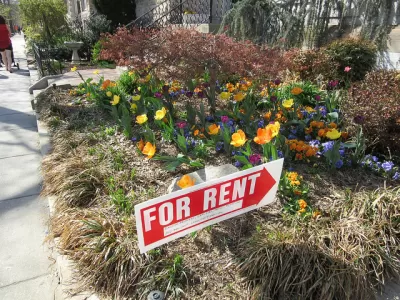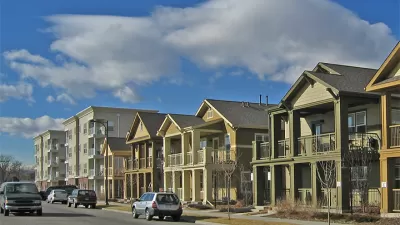If Congress gave the Housing Choice Voucher program enough money to serve every income-eligible applicant, what other reforms would be needed so every voucher recipient could find a decent home in a suitable area?

The Housing Choice Voucher program—often called Section 8—is the federal government’s most effective tool for combating homelessness, keeping more than 2 million families housed each year. While it is effective, it also needs repair. After all, Section 8 is so underfunded that 8.2 million households that qualify for a voucher can’t get one.
But that’s not the only problem.
Nearly one in three households that do get a voucher can’t find a suitable home with a landlord willing to accept it. These households often lose their voucher and their place on a yearslong waiting list, which can be mentally and emotionally damaging, says Vincent Reina, an associate professor in the Department of City and Regional Planning at the University of Pennsylvania.
“People are on the waitlist for decades,” he says. “They’re making decisions that are affected by something that may never happen, and their outcomes may actually be worse because they’re waiting.”
It’s for that very reason that a new housing system is needed, says Andreanecia Morris, executive director of HousingNOLA, a New Orleans-based housing advocacy group. “Universal vouchers are absolutely a part of that new system, but it needs to be a system that would guarantee housing for all voucher holders.”
To make the Housing Choice Voucher program truly work—that is, give the maximum number of eligible households a voucher and the ability to find a clean and habitable home they can afford in an area that has access to basic amenities like groceries and transportation—housing advocates like Andrew Aurand, vice president for research at the National Low-Income Housing Coalition (NLIHC), say the program needs a combination of changes on both the demand and supply sides.
“We need subsidy programs to increase the supply of units available to voucher holders,” Aurand says, “and we need to preserve the affordability and the quality of these units.”
To get to the appropriate combination of systemic changes to fix the Section 8 program “we need to be thinking about different ways to implement things we’ve already tried, and also thinking about new things to make it work from the landlord side,” says Katherine O’Regan, faculty director of New York University’s Furman Center for Real Estate and Urban Policy.
“It’s almost like there’s a three-legged stool. You’ve got private market landlords, the voucher households themselves, and the local housing authorities,” she says. “And there are things that we are going to need for each of the legs of that stool to make it work.”
What are some of the most pressing changes that would be needed to allow the Section 8 program to provide stable housing to as many low-income families as possible?
Increase Housing Supply
New home construction tanked after the housing crash of the late 2000s, leaving the nation short 5.5 million homes. To make up for what hasn’t been built over the past decade, it’s estimated developers need to build ...
FULL STORY: How to Make Universal Vouchers Actually Work

Planetizen Federal Action Tracker
A weekly monitor of how Trump’s orders and actions are impacting planners and planning in America.

San Francisco's School District Spent $105M To Build Affordable Housing for Teachers — And That's Just the Beginning
SFUSD joins a growing list of school districts using their land holdings to address housing affordability challenges faced by their own employees.

The Tiny, Adorable $7,000 Car Turning Japan Onto EVs
The single seat Mibot charges from a regular plug as quickly as an iPad, and is about half the price of an average EV.

With Protected Lanes, 460% More People Commute by Bike
For those needing more ammo, more data proving what we already knew is here.

In More Metros Than You’d Think, Suburbs are Now More Expensive Than the City
If you're moving to the burbs to save on square footage, data shows you should think again.

The States Losing Rural Delivery Rooms at an Alarming Pace
In some states, as few as 9% of rural hospitals still deliver babies. As a result, rising pre-term births, no adequate pre-term care and "harrowing" close calls are a growing reality.
Urban Design for Planners 1: Software Tools
This six-course series explores essential urban design concepts using open source software and equips planners with the tools they need to participate fully in the urban design process.
Planning for Universal Design
Learn the tools for implementing Universal Design in planning regulations.
Smith Gee Studio
City of Charlotte
City of Camden Redevelopment Agency
City of Astoria
Transportation Research & Education Center (TREC) at Portland State University
US High Speed Rail Association
City of Camden Redevelopment Agency
Municipality of Princeton (NJ)





























